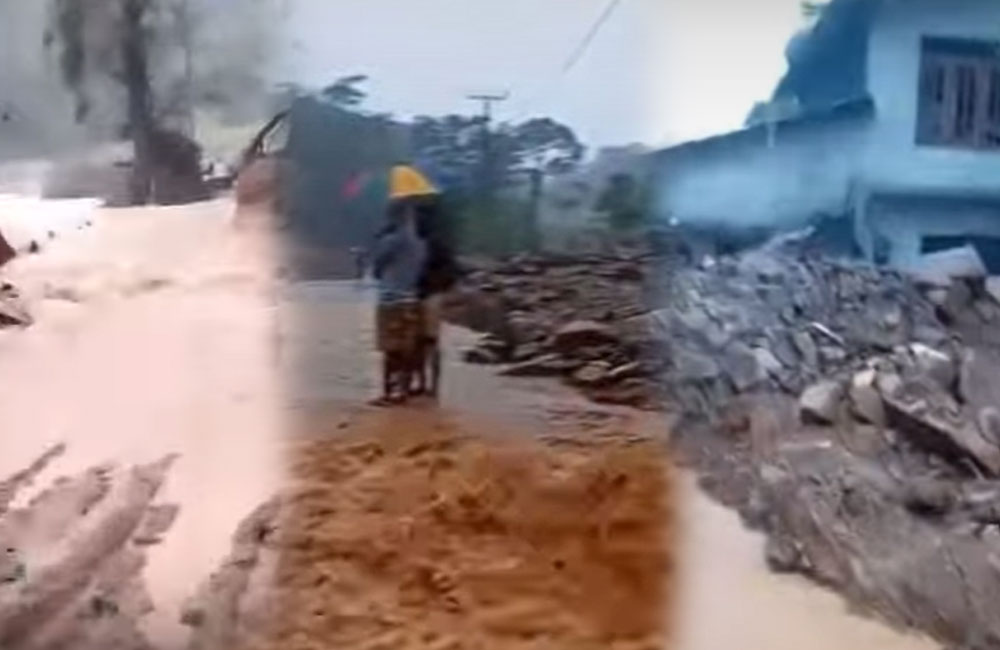News

93 Medicines Fail Quality Checks in 2025, with Indian Imports Most Affected
Sri Lanka’s Health Ministry has reported that 93 pharmaceutical products have failed mandatory quality testing during 2025, raising renewed concerns over the safety of medicines in circulation.
Data released by the Medical Supplies Division show that imported drugs accounted for the majority of the failures. Of the total, 42 medicines were manufactured in India, while 25 were produced locally. The remaining substandard products originated from several other countries, including China, Pakistan, Japan and Bangladesh.
Health officials said that affected drugs have either been withdrawn from use, placed on hold, or permanently discontinued, depending on the severity of the quality issues identified.
The Ministry noted that drug quality failures have been a persistent problem over the years. Since 2017, around 600 medicines have failed quality assessments. The highest annual figure was recorded in 2019, when 96 products did not meet required standards. In comparison, 86 failures were reported in 2022, followed by 83 cases in 2024.Concerns over pharmaceutical safety intensified in 2023 after reports linked certain medicines to serious complications and deaths, triggering widespread public debate and calls for tighter regulation.
Nearly two years later, the issue has again drawn attention following reports of two recent deaths allegedly associated with complications involving the anaesthesia-related drug Ondansetron. Authorities have stressed that investigations into these incidents are ongoing and that no final conclusions have yet been reached.

Bonds After the Storm: Can Markets Rebuild Sri Lanka
Sri Lanka’s recovery from Cyclone Ditwah has opened a critical debate over how the country should finance large-scale reconstruction at a time of tight public finances. With damaged railways, roads and utilities demanding urgent attention, regulators and policymakers are increasingly looking to the capital market specifically infrastructure bondsas a way to bridge widening funding gaps.
The Securities and Exchange Commission (SEC) has confirmed discussions with the Ministry of Finance on mobilising long-term capital through infrastructure bonds to support post-cyclone rebuilding. The urgency is stark. Restoring damaged railway tracks alone is estimated to cost around Rs. 200 billion, a figure that far exceeds the Government’s immediate fiscal capacity. Against a backdrop of debt restructuring and constrained budgets, traditional Treasury funding is no longer sufficient.
Infrastructure bonds offer clear advantages. By tapping institutional investors such as pension funds, insurance companies and long-term savers, the State can spread reconstruction costs over time while avoiding heavy short-term budget pressure. Well-structured bonds can also improve transparency by linking funds to specific projects, reassuring investors that proceeds are ring-fenced for rebuilding efforts.
However, the approach is not without risks. Issuing large volumes of bonds could increase contingent liabilities if projects fail to generate expected economic returns. Poorly designed instruments may crowd out private sector credit or push up domestic interest rates. Investor appetite will also depend on confidence in governance, project selection and repayment capacity areas where Sri Lanka’s recent economic history has made markets cautious.
Beyond bonds, the SEC is examining broader capital market reforms to support development financing. One proposal under consideration is the listing of well-managed State-owned enterprises on the Colombo Stock Exchange (CSE), which could unlock equity capital while improving transparency and accountability. Yet such listings require strong political commitment and corporate governance reforms to succeed.
The cyclone has also highlighted structural weaknesses in Sri Lanka’s capital market. Fewer than 1% of citizens currently hold stock market accounts, and market capitalisation remains around 20% of GDP—far below regional peers. Without expanding investor participation and deepening the market, infrastructure bonds alone may struggle to attract sufficient demand.
As Sri Lanka charts its recovery path, infrastructure bonds could become a vital tool in turning disaster into an opportunity for modernisation. But success will hinge on credible frameworks, disciplined execution and restoring investor trust without which the cost of rebuilding could rise even further.

GovPay Crosses Rs. 2 Billion Mark as Digital Payments Gain Momentum
Sri Lanka’s national digital payment platform, GovPay, has surpassed Rs. 2 billion in cumulative transaction value by the end of 2025, marking a major milestone in the country’s digital transformation drive.According to the Ministry of Digital Economy, the pace of growth has accelerated sharply, with the most recent Rs. 1 billion in transactions completed within a 45-day period. Since its launch on 7 February 2025, the platform has facilitated more than 69,000 digital payments linked to 3,372 government services provided by 215 state institutions.
A notable contributor to this growth has been the online traffic fine payment system, which was introduced on 10 April 2025. The service has already generated over Rs. 66 million through more than 50,000 transactions, reflecting strong public adoption.The traffic fine payment facility is currently available across the Western, Southern, Northern, North Western and North Central provinces, as well as on expressways. Authorities plan to extend the service islandwide by January 2026, starting with the Central Province.
At present, all local government bodies in the Northern Province and all Divisional Secretariats in the Southern Province are integrated into the GovPay system. The government has set a target to bring all local government institutions onto the platform by 2026.Several institutions, including the Kotelawala Defence University, Sri Lanka Police, the Department of Technical Education and Training, the University of Moratuwa and the Sri Lanka Atomic Energy Board, were among the leading contributors to GovPay transactions in 2025.
Beyond routine payments, GovPay also played a role in emergency response efforts. During disaster conditions in November 2025, the platform was used to collect nearly Rs. 14 million for the ‘Rebuild Sri Lanka Disaster Relief Fund.’The GovPay initiative is overseen by the Ministry of Digital Economy and jointly operated by the Information and Communication Technology Agency (ICTA) and LankaPay. Officials describe it as a critical step toward achieving Sri Lanka’s goal of building a USD 15 billion digital economy by 2030.

Sri Lanka Commemorates 70 Years of UN Membership with Events in New York
The Permanent Mission of Sri Lanka to the United Nations in New York marked seven decades of the country’s UN membership on December 11 through a range of events that emphasized Sri Lanka’s continued dedication to global cooperation and principled multilateralism.Under the leadership of Sri Lanka’s Permanent Representative to the UN, Ambassador Jayantha Jayasuriya, Sri Lanka joined 15 other Member States at UN Headquarters to observe the milestone. The group included Albania, Austria, Bulgaria, Cambodia, Finland, Hungary, Ireland, Italy, Jordan, Lao PDR, Libya, Nepal, Portugal, Romania and Spain.
A high-level discussion held as part of the commemoration brought together ambassadors from the 16 countries along with a panel of political analysts to examine the achievements of the multilateral system, the challenges it faces, and its future direction. The discussion was streamed live on UN WebTV.
Addressing the gathering, Ambassador Jayasuriya noted that while the United Nations celebrates its 80th anniversary this year, such milestones also provide an opportunity for reflection. He stressed the importance of strengthening and improving the organization without undermining its founding principles, in order to advance a more just, equitable and prosperous global order.
As part of the joint observance, the ambassadors unveiled a commemorative stamp representing unity, cooperation and the equal standing of all Member States within the UN framework.
Earlier in June 2025, during UN Open Source Week, Sri Lanka’s Mission partnered with the Permanent Mission of Italy and Wikimedia to host an “Edit-A-Thon,” underscoring the value of open, accurate information in safeguarding the institutional history of the United Nations. Ambassador Jayasuriya said the initiative aimed to enrich the UN’s historical record while amplifying diverse perspectives, including those of youth, vulnerable communities and the Global South.
In October 2025, the Mission also organized a fellowship event to recognize Sri Lankan nationals who have served across the UN system. Ambassador Jayasuriya paid tribute to their contributions, highlighting the legacy built by Sri Lankans who have distinguished themselves as diplomats, jurists, scholars, peacekeepers and international civil servants.
Through these commemorative activities, Sri Lanka reaffirmed its enduring support for the United Nations and its commitment to working closely with other Member States to strengthen multilateralism and advance shared global objectives in the years ahead.

Govt Raises Rs.10bn from First 5G Auction amidst Limited Bidding Raising Eyebrows
While Sri Lanka’s Rs. 10 billion 5G spectrum auction has been hailed as a regulatory success, the outcome has also sparked discussion about competition and investment appetite in the telecom sector. With only two operators Dialog Axiata and SLT-Mobitel participating, the auction underscored both the strengths and constraints of the local market.
Regulators emphasise that the process followed international best practice, allocating spectrum in the critical 3.5 GHz and 27 GHz bands through a transparent clock-auction framework. However, the absence of additional bidders reflects high capital requirements, existing market consolidation and the long payback periods associated with 5G investments.
Industry analysts note that operators now face the challenge of translating spectrum ownership into commercial success. Rolling out 5G networks will require substantial spending on infrastructure, fibre backhaul and compatible devices, even as consumer affordability remains a key concern.
The Government is betting that clear rules on infrastructure sharing and policy certainty will help mitigate these challenges, enabling faster deployment and broader coverage. Whether the limited bidding signals caution or simply market maturity will become clearer as operators move from licences to live services.
Sri Lanka has taken a decisive step toward next-generation connectivity after the Government raised around Rs. 10 billion through its first commercial 5G spectrum auction, clearing the path for the launch of advanced mobile services. Dialog Axiata PLC and SLT-Mobitel, a subsidiary of Sri Lanka Telecom PLC, emerged as the sole bidders, securing long-term licences in a process officials describe as a milestone for the country’s digital economy.
The spectrum licences were formally awarded at a ceremony attended by Digital Economy Deputy Minister Eng. Eranga Weeraratne and Telecommunications Regulatory Commission of Sri Lanka (TRCSL) Director-General Air Vice Marshal (Retd.) Bandula Herath. The auction followed the issuance of the Final Notice of Assignment in October, concluding years of regulatory groundwork aimed at preparing the market for 5G deployment.
Spectrum was allocated in two globally significant frequency ranges: the 3.5 GHz band, widely regarded as the backbone for wide-area 5G mobile broadband, and the 27 GHz millimetre-wave band, designed for ultra-high-capacity, short-range use cases. Licences have been granted for a 10-year period under a clock-auction mechanism, which authorities say ensured transparency and market-based price discovery.
Addressing the event, Deputy Minister Weeraratne said the auction marked the largest spectrum sale by value in Sri Lanka’s history and demonstrated confidence in the country’s digital trajectory. He noted that operators are expected to move swiftly from spectrum assignment to network rollout, enabling commercial 5G services in the near term.
Beyond faster mobile internet, the Government views 5G as a platform technology with broad economic implications. Officials say it will support Industry 4.0 applications such as smart manufacturing, precision agriculture and intelligent logistics, while enabling low-latency services critical for telemedicine, connected transport and advanced enterprise solutions. The technology is also expected to accelerate adoption of artificial intelligence, the Internet of Things and cloud-based services across both public and private sectors.
The Government is also moving to finalise enforceable rules on active and passive infrastructure sharing, with technical assistance from the World Bank and the Asian Development Bank. Policymakers argue that shared access to towers, fibre and related assets is essential to reduce duplication, lower costs and speed up nationwide 4G and 5G coverage.
With satellite-based internet services expanding rapidly worldwide, authorities believe a robust 5G ecosystem will help local operators remain competitive by offering high speeds, low latency and large bandwidth at affordable prices. The auction, officials say, highlights what coordinated action between the Government, regulator and private sector can achieve as Sri Lanka pushes ahead with its digital economy agenda

Tax Windfall, Industry Risk: Sri Lanka’s Auto Sector Crossroads
Sri Lanka’s vehicle import surge delivered a short-term fiscal jackpot in 2025, but the policy choices that enabled it now threaten to destabilise the country’s emerging automobile manufacturing base. Analysis by Parliament’s Public Finance Committee (PFC) shows that nearly Rs. 600 billion of the roughly Rs. 1 trillion increase in total tax revenue last year stemmed from vehicle imports overshooting official targets by more than Rs. 200 billion. While the inflow eased budget pressures, the momentum is fading, and industry leaders warn the aftershocks could be severe.
The government’s decision to reopen vehicle imports and layer new taxes was designed to bolster revenues as pent-up demand returned. Yet the same move has exposed local assemblers to intensified competition without transitional protection. Over the past few years, Sri Lanka quietly built a domestic assembly ecosystem, with 17 operational plants producing motorcars, SUVs and electric three-wheelers, and a further 17 investors preparing to enter the market. The sector supports more than 15,000 direct and indirect jobs and has been positioned as a cornerstone of industrialisation.
That progress is now at risk. Imported vehicles enjoy powerful cost advantages global economies of scale, mature production processes and integrated supply chains allowing them to land at prices domestic assemblers struggle to match. Local assembly, by contrast, bears higher labour and input costs that are ultimately passed on to consumers. Without a tax regime that recognises value addition at home, industry executives argue that investment plans will stall and existing operations could downsize.
The debate is not limited to conventional vehicles. Sri Lanka is weighing pathways to cleaner mobility, including electric vehicles and the longer-term promise of hydrogen fuel cell vehicles (FCVs). FCVs offer fast refuelling and extended range, but global hydrogen infrastructure remains nascent and production costs are high. Developing such technology locally would require substantial policy backing, infrastructure investment and patient capital conditions that are difficult to meet if the domestic industry is weakened.
Ironically, the country’s auto component manufacturing segment is gaining traction. Sri Lankan firms have earned a reputation for quality, embedding themselves in regional supply chains. The ambition is to lift component exports from about US$800 million to US$2 billion within five years and generate an additional 45,000 jobs. This opportunity hinges on a stable automotive ecosystem at home.
As import-led revenues cool in 2026, policymakers face a trade-off: rely on volatile tax windfalls or recalibrate policy to protect local assembly while still meeting fiscal goals. The choices made now will determine whether Sri Lanka converts a temporary boom into durable industrial growthor watches it unwind.

Cyclone Ditwah Batters MSMEs, Recovery Proves Costly
Sri Lanka’s micro, small and medium enterprise (MSME) sector is facing a prolonged and costly recovery after Cyclone Ditwah inflicted widespread damage on manufacturing and enterprise activity across the country. Newly released data from the Industry and Entrepreneurship Development Ministry reveal the scale of disruption and the mounting challenges confronting businesses that form the backbone of regional economies and employment.
According to assessments compiled by the Industrial Disaster Support Centre (IDSC), nearly 9,630 industrial and business entities under the Ministry’s purview have been directly affected by the cyclone. The damage has fallen disproportionately on smaller firms. Micro-scale enterprises alone account for about 12,300 reported cases, representing more than 40% of all submissions received. Small enterprises number close to 9,850, while medium-scale firms stand at around 6,640. Although large enterprises make up a relatively small share about 860 cases their losses carry wider supply-chain implications.
For MSMEs, the damage extends well beyond physical assets. Many businesses report destroyed machinery, damaged inventories, power disruptions and loss of access to transport links. For micro and small firms operating with limited buffers, even short interruptions translate into cash-flow crises, delayed wage payments and the risk of permanent closure.
Recovery timelines highlight the uneven path ahead. While around 44% of affected enterprises have managed to resume operations, often at reduced capacity, the remainder face significant delays. About a quarter of businesses expect to reopen within two weeks, while another 20% estimate it will take up to a month. Alarmingly, nearly 8% anticipate that restarting operations will take three months or longer, signalling deep structural damage and financing constraints.
Officials say the data will be used to prioritise relief measures, including emergency grants, concessional credit and technical assistance. However, industry representatives caution that access to finance remains a critical bottleneck. Many MSMEs lack collateral or formal credit histories, complicating loan approvals at a time when rapid liquidity support is essential.
The cyclone has also exposed long-standing vulnerabilities in the MSME sector limited insurance coverage, heavy dependence on local infrastructure and weak disaster preparedness. Without targeted support, there is concern that temporary disruptions could translate into permanent job losses, especially in rural and semi-urban areas where MSMEs are major employers.
As the Government rolls out relief programmes, policymakers face a delicate balancing act: delivering swift financial assistance while tailoring support to the real conditions on the ground. The speed and precision of this response will determine whether Sri Lanka’s battered MSME sector can recover—or whether Cyclone Ditwah leaves lasting scars on the country’s industrial base.

Ududumbara Records Highest Rainfall as Multiple Reservoirs Overflow
The Disaster Management Centre (DMC) reported that Ududumbara experienced the highest rainfall during the 24-hour period ending at 6.00 a.m. today (19), with nearly 201 millimetres recorded. The second-highest rainfall was measured in the Ududumbara Poththapitiya area, which received about 155 millimetres.
As a result of the continuous heavy rains, 34 major tanks and reservoirs across the country are currently spilling, the DMC said. In the Anuradhapura District, spillages have been reported from the Kala Wewa, Rajanganaya, Nachchaduwa and Angamuwa reservoirs.
Several reservoirs in the Kandy District, including Polgolla, Victoria, Randenigala and Rantembe, are also overflowing. In addition, the Deduru Oya reservoir in Kurunegala District and the Senanayake Samudraya in Ampara District have reached spill levels.
To manage rising water levels, two spill gates of the Kala Wewa have been opened by six feet each. At the Rajanganaya reservoir, four spill gates have been raised by five feet, while two others have been opened by four feet. Meanwhile, four spill gates at the Nachchaduwa tank have been opened by four feet, with three additional gates raised by two feet. Two spill gates at the Angamuwa reservoir have also been opened by two feet each.
The DMC further noted that landslides and related incidents have led to the complete closure of several roads in the Badulla, Matale, Kilinochchi, Kegalle and Anuradhapura districts. Flooding has also blocked sections of the Sungawila–Somawathiya Road in the Polonnaruwa District.
Authorities urge the public to remain vigilant and follow safety instructions issued by local officials as adverse weather conditions persist.

Acting Deputy Director of Colombo National Hospital Placed on Suspension
The Ministry of Health has suspended the official responsibilities of Dr. Rukshan Bellana, the Acting Deputy Director of the Colombo National Hospital, according to an official letter dated 18 December 2025.
The letter states that initial investigations conducted by the Ministry found that Dr. Bellana, while functioning as a government medical officer in a senior role, had issued comments to the media without prior approval. These statements are said to have led to controversy and caused public concern.The Ministry further noted that disciplinary proceedings will be initiated in due course in connection with the matter.

Fairly Heavy Rains and Strong Winds Forecast Across Several Regions Today
The Department of Meteorology says intermittent showers are expected today in the Eastern, Uva and Central provinces, as well as in the Polonnaruwa and Hambantota districts. Rainfall of around 75 mm may occur in some locations within these areas.Meanwhile, the North-Western Province and the Anuradhapura district are likely to experience several spells of rain during the day. Showers or thundershowers are also expected in many areas of the Western and Sabaragamuwa provinces and in the Galle and Matara districts after 1.00 p.m.
Fairly strong winds, reaching speeds of about 40 kmph, may occur at times over the eastern slopes of the central hills, the Northern, North-Central and North-Western provinces, and in the Trincomalee, Hambantota and Monaragala districts.In addition, misty conditions are expected during the early morning hours in parts of the Sabaragamuwa, Western and Central provinces, as well as in the Galle and Matara districts.
The Meteorology Department urges the public to take necessary precautions to reduce potential damage caused by localized strong winds and lightning associated with thundershowers.

Sri Lanka’s MSME sector Faces Long Road Back after Cyclone Shock
Cyclone Ditwah has laid bare the fragility of Sri Lanka’s MSME sector, raising concerns that rebuilding may prove harder than the initial clean-up. Fresh data from the Industrial Disaster Support Centre show that tens of thousands of businesses have sought assistance, underscoring the breadth of the impact.
Micro and small enterprises dominate the affected pool, reflecting their exposure to flooding, power outages and transport disruptions. While some firms have resumed activity, many are operating below capacity, struggling with damaged equipment, depleted inventories and weakened demand.
The recovery challenge is not just financial. Delays in restoring utilities, supply-chain interruptions and labour displacement are slowing restarts, particularly for enterprises outside major urban centres. Medium-sized firms, though better capitalised, also face rising repair costs and uncertain cash flows.
Officials say relief schemes will be prioritised using IDSC data, but business groups argue that speed is critical. Without rapid disbursement of funds and flexible credit terms, the risk of closures and job losses will rise. The cyclone, they warn, could become a turning point for the MSME sector either accelerating reform and resilience, or deepening long-standing structural weaknesses.

Initial Comments on the Draft Protection of the State from Terrorism Bill
The Centre for Policy Alternatives (CPA) has been alerted to the draft Protection of the State from Terrorism Bill (Bill) published on the website of the Ministry of Justice, which invited public comments within a month of its publication. Whilst the government publicly announced in August its intention to publish a draft Bill for public comments, the publication at the present moment, when Sri Lanka is confronted with multiple challenges in the aftermath of Cyclone Ditwah, raises serious concerns. Such a context limits meaningful public engagement of any proposed legislation, and the limited time further impedes an inclusive and transparent law reform process. Whilst CPA appreciates the decision of the government to place the Bill in the public domain for comment, we urge for further time for comments and discussion.
With the hope that more time is provided for a fuller comment on the Bill, CPA shares these initial comments with the view of constructive engagement and public awareness of key areas requiring attention. At the outset, CPA emphasises that the benchmark against which this Bill must be assessed is not merely whether it represents an improvement over the Prevention of Terrorism Act (PTA), but whether the Bill, in and of itself, complies with the Fundamental Rights guaranteed under the Constitution of Sri Lanka and with Sri Lanka’s international human rights obligations. It must be borne in mind that the PTA was never constitutional, nor did its drafters claim that it was. No meaningful effort was made to ensure compliance with fundamental rights standards and due process safeguards, as it was taken as granted that the legislation could be enacted with a special two-thirds majority in Parliament. The result has been a draconian law that has been used for decades to target and suppress the rights of citizens, with limited debate as to what is meant by terrorism and the need for extremely broad terror laws in a post war context.
It is within this broader context that CPA sets out these initial observations on the draft Protection of the State from Terrorism Bill. The following are several clauses that raises concerns:
The Offence of Terrorism and Other Offences
- The definition of the offence of Terrorism remains broad, seemingly designed in a manner that can be used to suppress dissent, rather than being limited to actual acts of terrorism. One of the main criticisms of the Anti-Terrorism Bill of 2024 was that it may have been used against those who protest against the Government, and while the present Bill contains a provision that seems to exclude protestors in clause 3(4), this clause is vague as to what will and will not be defined as terrorism in the course of a lawful protest.
Arrests made by Members of the Armed Forces or Coast Guard
- Clause 24 of the Bill provides that when a suspect is arrested by the armed forces or the coast guard, then they shall ‘without unnecessary delay, and in any event within a period not exceeding twenty-four hours’ be produced before the Officer – in – Charge of the nearest police station. When contrasted with clause 23, which requires a police officer making an arrest to produce the suspect before the OIC ‘forthwith’, it raises the question as to why the same urgency is not seen with the armed forces. This perpetuates the norm of militarising the powers of arrest and detention.
Pre-Trial Detention and Detention Orders
- As per clause 28(1), a person can be held in remand for up to a year. As per clause 28(2), if there is a Detention Order made against the person, then in combination, the period of remand and detention can extend up to two years. This means that a person can languish in detention for up to two years without being charged with a crime. Such a long period again raises questions of the power of the State to target individuals, exacerbated by Sri Lanka’s history of long periods of remand and detention, which has contributed to abuse and violence.
Proscription Orders
- Clause 63 gives sweeping powers to the executive to proscribe an organisation, similar to what was seen in the 2024 Bill. Coupled with the wide power of the President to impose restrictions on such an organisation, the criminalisation of acts related to the organisation in terms of clause 6 gives the State a wide power to use this law to restrict freedom of association and crackdown on dissent.
Curfew Order and Prohibited Places
- The Bill provides power under clause 65 for the President to issue a curfew order and under clause 66 for the Secretary to the Ministry of Defence to issue a direction that a place is a prohibited place. These clauses are broad and vague, thus making them susceptible to abuse.
The above are some clauses that raise concerns, though CPA notes that a fuller and in-depth study of the Bill is required for a comprehensive review and comment, which we hope to do in 2026. In the spirit of constructive engagement, CPA urges the authorities to provide greater time for public comments and consultation, enabling the citizens to be aware of proposed laws and facilitate a law-making process that is transparent, inclusive and contributes to upholding the rule of law and democracy in Sri Lanka.
(Source - Cpalanka)
Page 6 of 638